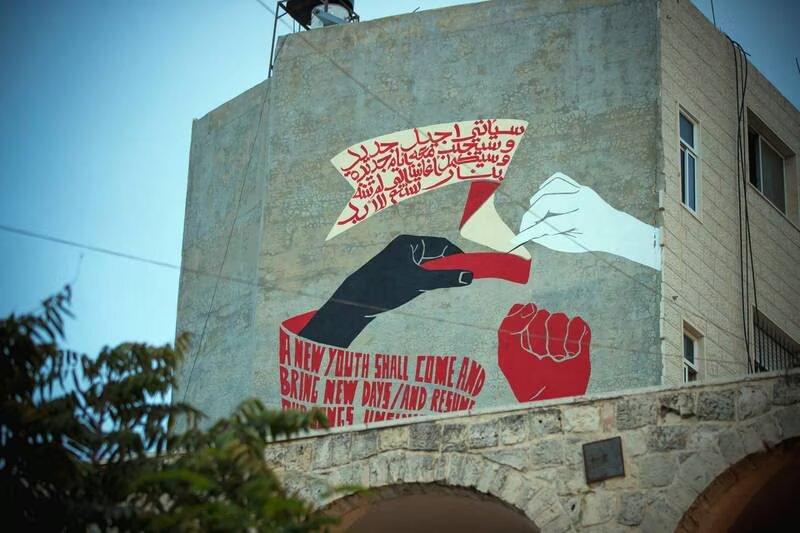Arabic translation:
A new youth shall come
To bring new days and resume
Our unfinished songs
With everlasting fire
________________________________________________
Why Qalandiya?
For the past decade, Qalandiya has been associated with the infamous Israeli checkpoint that continues to suffocate the West Bank, disconnecting it from Jerusalem and the rest of the world. This checkpoint has been highly pervasive in the media and in the visual and literary works produced in and about Palestine. Countless stories about daily suffering and subjugation take place there, offering sad but true glimpses of the oppressive regime of the Occupation.
However, “Qalandiya” has other connotations that have been deliberately smeared or totally erased over the years, but which, with a more intimate look, could be uncovered. There is the Qalandiya Airport, for example (or the Jerusalem International Airport as it was initially called), the Qalandiya refugee camp, and Qalandiya village (which the Wall has divided into two separate parts). Qalandiya is where many paradoxes meet. It was the point of connection with the rest of the world until 1967, but has become the symbol of disconnection, isolation, segregation, and fragmentation.
Qalandiya International will utilise the name and its multilayered and contradictory meanings in an event that seeks to expose the true Palestinian brand to the international cultural scene, while giving the world a taste of the symbolic paradox of Qalandiya.
Source:
https://www.biennialfoundation.org/biennials/qalandiya-international-palestine-2/
_____________________________________________________________________
Excerpt
“We didn’t want to romanticise ‘solidarity’,” says Reem Shadid, who co-curated one of the Qalandiya exhibitions, Debt, at Ramallah’s Khalil Sakakini Cultural Centre. “What does it mean? It’s such a personal sentiment. In some ways, it’s no longer collective.”
Shadid and her co-curator, Yazan Khalili, considered debt as a means of structuring human and artistic relations, both in terms of what is owed financially and emotionally. “You owe a lot to your family, for example,” suggests Shadid. For Lydda, a show examining a garden city from the 1940s that was planned for British colonialists, Anani explored a site he is unable to visit. A show at the Palestinian Museum looked at how traditional Palestinian embroidery became part of the symbology of struggle.
Reem Shadid and Yazan Khalili curated an exhibition around the theme of "debt" for the Qalandiya International: "financial debt, power debt, and also the debt you owe you family," says Shadid
But if the responses were varied, one clear picture of the Palestinian art scene emerged: one that is moving away from the first generation of the country’s artists who created committed art in line with Palestine Liberation Organisation goals. They’re also, and more slowly, moving away from the second stage as well, the post-Oslo Accords era when Palestinian art gained currency abroad and when the NGOs began funding the nascent Palestinian state. According to Antonia Blau, who is researching a PhD on European cultural engagement in Palestine, foreign investment now supplies the infrastructure for most of the Palestinian cultural and governmental institutions.
Source:
https://www.thenationalnews.com/arts-culture/art/solidarity-and-what-it-means-in-palestine-s-art-scene-1.780482

